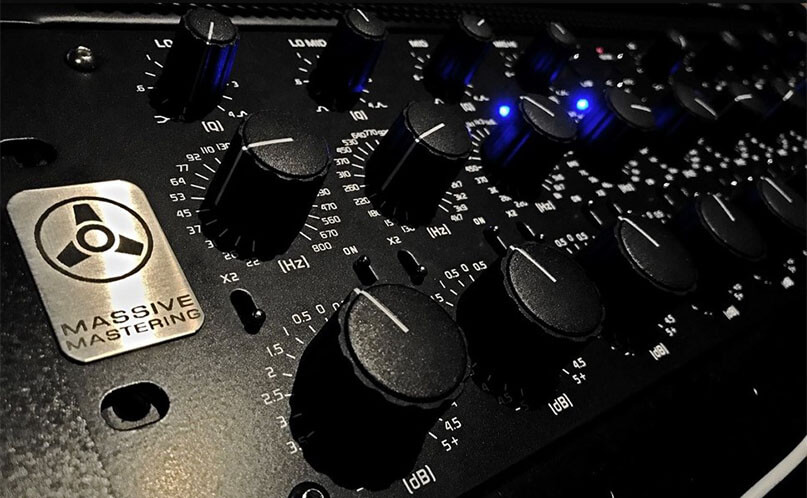Songwriting tips

1. Lyrics and Melody
Creating quality, popular songs starts long before you step into the recording studio. The foundation of a successful composition is good lyrics and catchy melodies. Even the most high-end vocal microphone won’t be able to save a track if the lyrics are boring and the melody is unmemorable.
It always amazes me how many home musicians start discussing equipment and recording techniques before the song is even written. Before you can even think about recording, you need to have a great song. You can’t record something that doesn’t exist yet.
While the term “hit” is very subjective, I believe that successful songs have a few key characteristics.
Ingredient 1: A Memorable Melody
Melody is what makes a song memorable and sticks in the listener’s mind. If your melody line is too simple or boring, it will be quickly forgotten. Try to create a melody that is easy to remember and makes you want to repeat it over and over again.
Ingredient 2: Memorable Lyrics
The lyrics of a song should be inextricably linked to the melody. These don’t have to be deep philosophical thoughts – just one strong line or phrase that will stick in the listener’s mind. Good lyrics combined with a catchy melody will give your song the necessary memorability.
Ingredient 3: An Unusual Element
Most songs follow a standard structure: verse, chorus, verse, chorus, etc. While this is completely normal, adding an unusual element can make your song unique. This could be an unexpected change in the arrangement, an unusual instrument, or a unique vocal technique. Listeners love moments that make them say, “Wow!”.
Regardless of the genre, be it EDM, rock, jazz or pop, your goal is to create a catchy melody, memorable lyrics and at least one unusual element to the song. This is a difficult task, but with experience comes skill: the more you work on the songs, the better they become.
Remember that creating music is work that requires consistency and diligence. Don’t sit around and wait for inspiration to strike – treat songwriting as a job and you will see how your compositions will start to improve. You can become a great songwriter if you work hard and apply these three key ingredients.
2. Arrangement and planning
The stage of working on the arrangement and planning of a song is often underestimated and sometimes completely ignored by musicians. However, it is at this stage that the foundation for a successful track is laid, and ignoring it can significantly affect the final result.
Arranging and planning is not just about choosing instruments and sounds. It is a whole process that includes decisions about how and when different elements of the song will sound. The goal of arranging is not just to add variety, but to create a dynamic musical narrative that keeps the listener’s attention from beginning to end.
Think about how your song will be perceived if it is played on the radio. How likely is the listener to stay with you after the first verse and chorus if the song does not offer anything new? If the song sounds monotonous, its listeners can quickly lose interest.
Modern hits often avoid monotony thanks to carefully thought-out arrangements. Composers use various techniques to ensure that each listen brings something new. Here are some methods that help to keep the audience’s attention:
- Vocal Effects: For example, using tube or distortion effects to create a unique sound;
- Percussion: Adding shakers, tambourines, and other percussive elements;
- New Instruments: Introducing synthesizers, strings, or pads;
- Vocal Parts: Introducing additional vocal parts or harmonies;
- Arrangement Changes: Adding new guitar parts or changing existing ones;
- Tempo Changes: Slowing down or changing the tempo at key moments.
Each change should be strategically placed at important points in the song. For example, you could start with a full arrangement for the first verse and then move on to a simpler arrangement with just the vocals and guitars. Or you could break the song down into sections where each section has its own sonic space, creating variety and interest.
The goal of an arrangement is to take the listener on a musical journey that is exciting and unique. You don’t want to just repeat the same thing over and over again, but to offer a new, interesting perspective at each point in the song.
The process of creating an arrangement requires the ability to find a balance between using all the available elements and avoiding redundancy. You need to understand when and how to introduce new elements to keep the listener interested and not overwhelm them. This requires careful planning and a careful approach to each section of the composition.
Take your song and study it carefully. Determine what new and interesting things you can offer in each section. Once you are able to isolate and analyze the differences and unique moments in your composition, you are ready for the next step.
3. Recording
Once your song is ready and the arrangement is worked out, the recording stage comes, which largely determines the success of your track. This stage, known as tracking, is critical and requires a serious approach. Although many musicians believe that the real magic happens at the mixing stage, the recording should be taken with the same attention.
At this stage, ideas become reality, and the quality of the recording directly affects the final result. But often home studios face the problem of carelessness and haste, which can significantly worsen the final product. Don’t let this happen!
Here are three key rules that will help you achieve better results during the recording process:
- Take your time. Recording should be thorough and thoughtful. Every sound, every note is important. Make sure you spend enough time setting up your equipment and checking the sound before you start recording;
- Approach recording with care. Use every take to improve the sound. Don’t treat recording as a simple fixation – it is the basis of your track. Well-recorded material will make the work easier at the next stages and will improve the quality of the final product;
- Check the quality of the recording. Regularly listen to the recorded materials to make sure they are of good quality. If something is not right, don’t be afraid to re-record. This will help avoid many problems during mixing and mastering.
Don’t forget that tracking is not just a technical process, but an important stage that sets the tone for your entire composition. Approach it seriously and carefully, and you will see how your track will start to sound exactly the way you want it to.
Rule 1. Microphone placement is key to successful recording
It’s not just about choosing the right microphone, but also about placing it correctly. The position of the microphone in the room can make a huge difference to the sound. Even a slight change in distance from the sound source can have a noticeable impact on the final result. Don’t limit yourself to standard methods, such as placing the microphone directly in front of the amp. Take the time to experiment until you find the optimal placement that most accurately conveys the sound image you want to achieve.
Rule 2. Don’t overdo it with the volume
One of the most common mistakes is recording at the loudest possible levels. Many musicians believe that they need to record as loud as possible, but this can lead to distortion. Set the input level to 50-75% of the peak value to avoid clipping and keep the recording clean. This will allow your instruments to sound clear and musical.
Rule 3. Approach Recording Like a Producer
In a studio, in addition to the engineer, there is usually a producer who determines what the final sound should be. You will have to take on both roles – engineer and producer. Before you start recording, determine what sound you want to achieve. Build a sonic picture of the song in your mind and work to transfer it to the recording.
Try using a technique to develop your skills as a producer: choose three favorite songs and describe their sound using adjectives. What do the drums sound like? What are the vocals like? This will help you better understand the sound you want to achieve.
Following these rules will help you achieve quality sound, even though the recording process may take time and practice. Remember that recording is an art that develops with experience.
4. Editing
Modern digital audio recording makes it easy and efficient to adjust and enhance your material, whether it’s your own performance or the work of other musicians. This is a significant improvement over the pre-digital editing era, when the process was much more labor-intensive and complex.
Before digital technology, sound engineers used razors to cut tape and splice it by hand. Today, you can edit audio with simple, quick steps in your DAW without losing quality.
However, despite the simplicity of digital editing, the process requires caution. Incorrect editing can easily ruin the sound, turning it into something lifeless and unnatural. To avoid such problems, I recommend breaking down editing into four basic steps:
Step 1. Working with takes
Almost all DAWs allow you to record multiple takes of the same part. For example, you can record several versions of vocals and then select the best moments for the final assembly. Before you start editing, listen to all the takes, identify the best parts and record them so that you don’t get lost in the process.
Step 2. Editing vocals (autotune)
Using autotune and other pitch correction tools is a common practice in the studio. Even experienced vocalists can make mistakes when recording, despite their stage skills. Pitch correctors will help you eliminate small inaccuracies and improve the sound. You should not rely entirely on autotune, but it can significantly improve the quality of the recording if used wisely.
Following these rules, you will be able to edit your recordings well, preserving their expressiveness and liveliness. Remember that editing is an art that requires practice and attention.
Step 3. Removing Unwanted Sounds
Once you have finished assembling the takes and fixing the vocals, the next step is to remove unwanted sounds. When recording vocals, these may be unintentional sounds such as gasps, sighs, and lip closures. These small sounds can distract from the main melody and make the recording sound less professional.
For instrumentals, these may be random noises, such as unnatural guitar sounds caused by accidentally touching the strings, or other extraneous sounds that have entered the microphone field. I have heard many songs where the vocalist’s random gasps or other unwanted noises have ruined the overall impression. A little more time spent removing these small imperfections can significantly improve the sound of the track, making it sound cleaner and more professional.
There are different approaches to this process: some engineers prefer to completely remove all unnecessary sounds, even the most subtle ones, while others choose a more selective approach. I use a hybrid method, trying to find a balance. Small imperfections can add life and dynamics to a track, so it’s important to only remove sounds that really interfere with the experience.
Too much cleaning can make the sound sterile and lifeless, while too little attention to this step will result in muddy and unpleasant audio. Find a happy medium so that your sound is clean but doesn’t lose its naturalness.
Editing tips
When working with multi-track drum recordings, make sure that all tracks are grouped. This will allow you to manipulate all tracks at once, avoiding phase and synchronization issues. Also remember to crossfade slightly at each edit to avoid clicks and pops.
Step 4: Quantize Bass and Drums
Editing recorded material offers many possibilities, but often musicians fall into the trap of over-correcting, trying to fix absolutely everything. It is important to remember: only correct those elements that really need correction.
Once you have finished cleaning up the guitars and vocals, the next step is to quantize the bass and drums. However, this process should be done sparingly, paying attention only to obvious inconsistencies. Do not try to perfectly align every hit and every note to the grid. It is better to focus on correcting significant discrepancies and obvious errors, and leave the rest as is.
The key rule when editing recorded material is to realize that any, even small, correction can have a significant impact on the overall sound. Sometimes a small correction can significantly improve a track, but there are cases when too many edits can ruin a song. So try to keep the sound natural and make corrections only in those places where it is really necessary.
The right approach to quantization will help keep your track alive and dynamic, while avoiding it becoming too sterile and losing the original character of the song.
5. Music mixing
Recording captures the music, editing enhances it, and mixing brings it to life, allowing the tracks to transcend the speakers and impress the listener.
Mixing is the key stage where all the recorded elements come together to form a cohesive whole. Using panning, level adjustment, equalization, compression, and various effects, you eliminate the weaknesses of the instruments and highlight their strengths. This process is critical to making your track sound harmonious and professional.
Some musicians underestimate the importance of mixing, while others may spend too much time on this stage. In fact, mixing is not only important, but also a fairly straightforward process that does not require excessive effort if approached correctly.
To achieve the perfect sound, with only minor “cosmetic” adjustments to volume and panning remaining, it is worth breaking the mixing process down into five main phases. This approach will help you systematically and efficiently bring your track to its best sound.
Phase 1. Volume and Panning
The first and most important step in the mixing process is to set the volume levels and panning. Play the track in a loop and focus on making sure that each instrument is properly balanced. It is important that no one element dominates or attracts too much attention. Each instrument should have its place in the mix so that the overall picture sounds harmonious and balanced. At this stage, do not get distracted by effects. Your main goal is to achieve a clean and balanced sound using only volume and panning.
Phase 2. Equalization
Equalization is a powerful tool for creating a clean and pleasant sound. Its main purpose is to remove unnecessary frequencies, highlight the strengths of each instrument and create space in the mix. It is best to use subtractive EQ, which involves removing frequencies rather than boosting them. This helps to create a clear and clean sound in which each instrument takes its place and does not drown out the others. This way, you will provide space for all elements in the mix.
Mixing Tip
The main secret of successful mixing is balance. If you focus on creating a harmonious balance between all the tracks and instruments, the mixing process will become much easier and the result will be more professional.
Phase 3. Compression
After EQ, move on to compression. A compressor may seem like a complex tool, but its capabilities are enormous. With compression, you can not only control volume levels, but also add density and dynamics to a track. Think of a compressor as an automatic volume fader that helps control the dynamic changes in a track, making the sound more balanced and rich.
Phase 4. Reverb and Delay
Once your mix is balanced and enhanced with EQ and compression, move on to ambience effects such as reverb and delay. These effects add depth and volume, making the track more alive and organic. Do not overdo these effects, otherwise the sound will become blurred and unclear. Reverb helps to unite all the elements into a single sound space, and delay adds volume and enlivens those instruments that sound too dry.
Phase 5. Automation
Automation is an additional, but very useful stage. It allows you to make the track more dynamic and interesting. Modern programs allow you to automatically control the parameters of plug-ins, instruments and controls in different parts of the composition. Use automation to highlight accents, change the volume and panning of individual instruments, as well as to turn effects on and off, which will create variety and individuality in the mix.
Mixing is an art that gives life, beauty and depth to a track. To see its impact, compare fragments before and after mixing. Simple changes can significantly improve the sound and make the composition brighter and richer.
6. Mastering
We have reached a key stage in the process of creating your track – mastering. This is the final step before your song is ready for release.
Mastering is often a confusing topic for new musicians who may mistakenly believe that this is the process that makes a track stand out. In reality, mastering is a delicate and subtle process that completes a track and prepares it for release.
Mastering was originally intended to prepare audio material for recording on physical media such as vinyl records or compact discs. Although the process has been adapted to modern digital formats, its purpose remains the same. Mastering professionals add finishing touches such as equalization, compression, and other adjustments to bring the track to perfection.
Without going into too much technical detail, it is important to understand the essence of mastering: it is the final stage that ensures that the track sounds high-quality on all devices and platforms. This is the moment when the strengths of your composition are emphasized, minor imperfections are eliminated, and it is ready for release.
Step 1: Compare to a Professional Mix (Reference Track)
Once you have finished mixing your track, it is important to make sure it sounds like a professional recording. Comparing to a reference track is an effective way to improve the final sound of your composition.
Select a professional track in the same musical style as yours and import it into your project. Reduce the volume of the reference track to the level of your mix and listen to both tracks one by one. This will help you identify any flaws and determine what improvements are needed to bring your track up to commercial quality standards.
Small EQ adjustments on the master channel can greatly improve the sound of your song, bringing it closer to a professional level and improving the overall experience.
Mastering Tips
When applying any processing during the mastering stage, such as equalization or stereo widening, it is important not to exceed the permissible peak values (the limiter is an exception in this case). Remember that loudness does not always equal quality – our brains can perceive loud sounds as higher quality, but this is an illusion. Always keep an eye on your monitoring system!
Step 2: Achieving Commercial Loudness
Once your mix has reached the level of a professional track, the next step is to adjust the volume to industry-standard levels.
Mixes that sound good in your DAW may be too quiet when played back on other systems. To solve this problem, use a limiter. You don’t need any additional software — your DAW already has all the tools you need. Set the limiter on the master channel and increase the volume to the desired level so that your track sounds on par with other commercial recordings.
While mastering is a more complex process, for a home studio it’s enough to focus on two main tasks: comparing your track to a professional mix and using a limiter to achieve the desired loudness level. These steps will help you create quality tracks that are ready to publish.
Time to Make Music
Now you have a step-by-step plan for creating a quality track in your home studio. You understand that a successful track starts with a good song and arrangement, and recording is where the magic happens. Weaknesses of instruments can be improved at the mixing stage.
All that remains is to start doing! Constantly writing, recording, mixing and releasing music is the path to mastery. And the best part about this process is that you are doing what you love.










